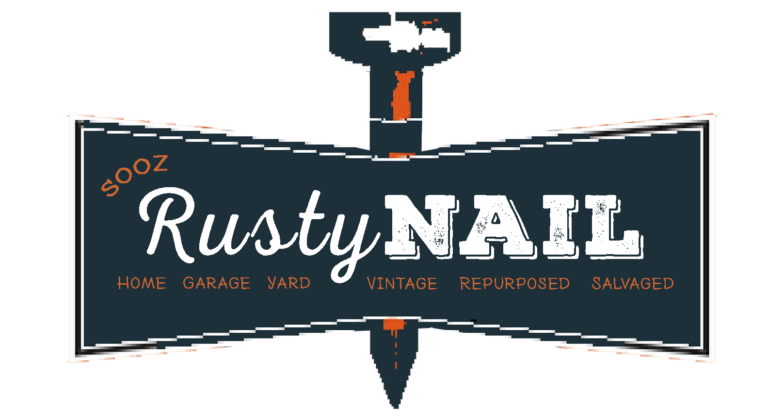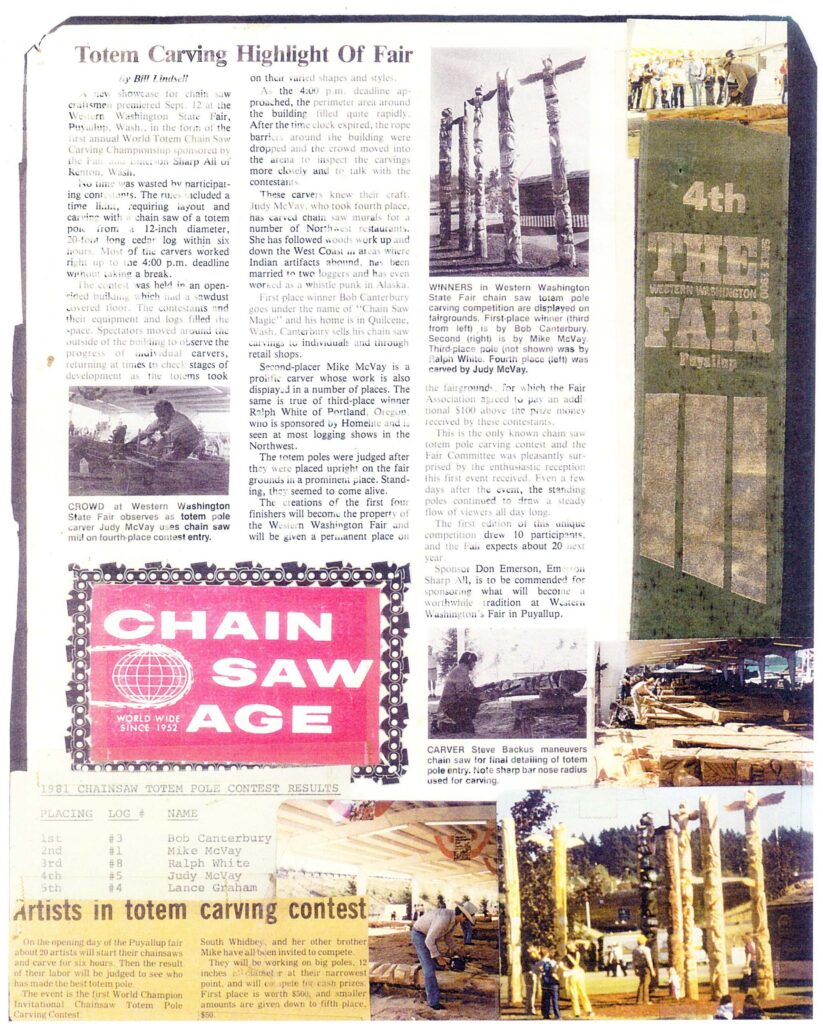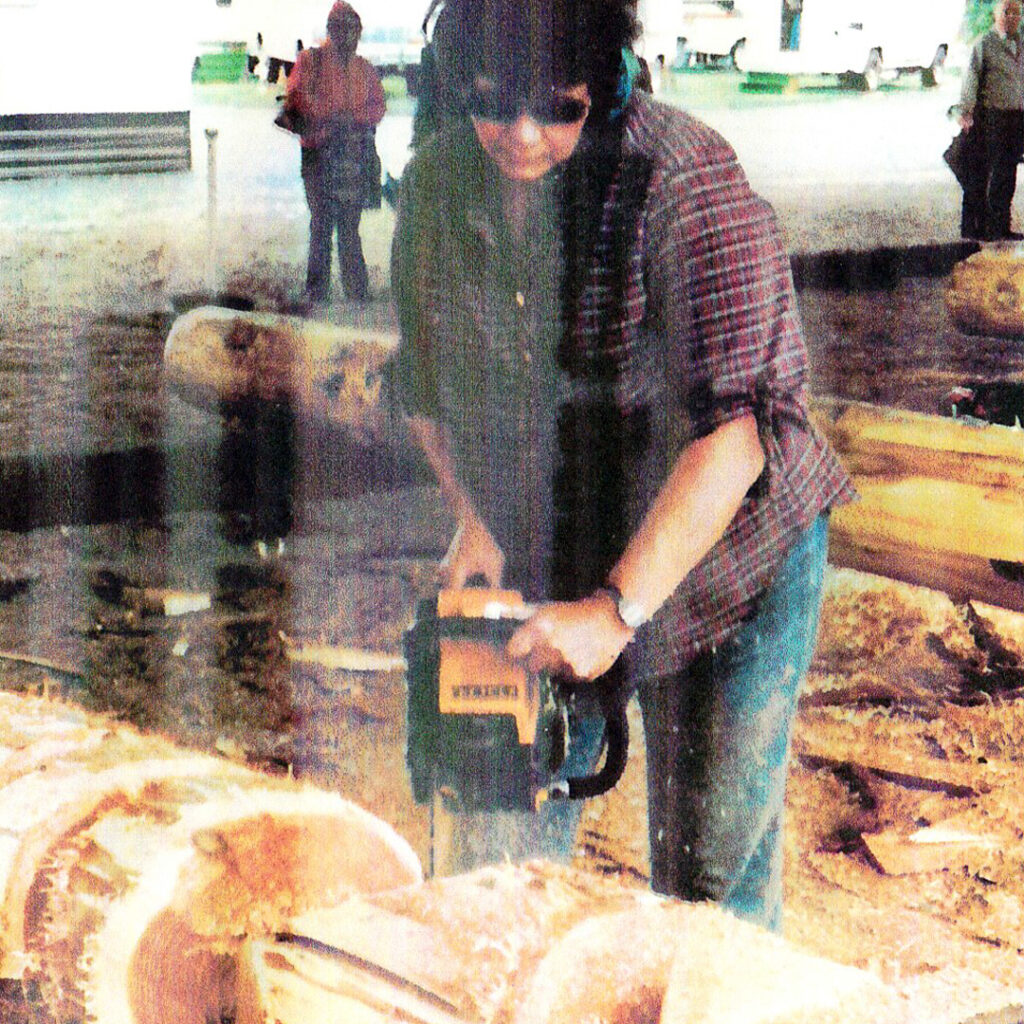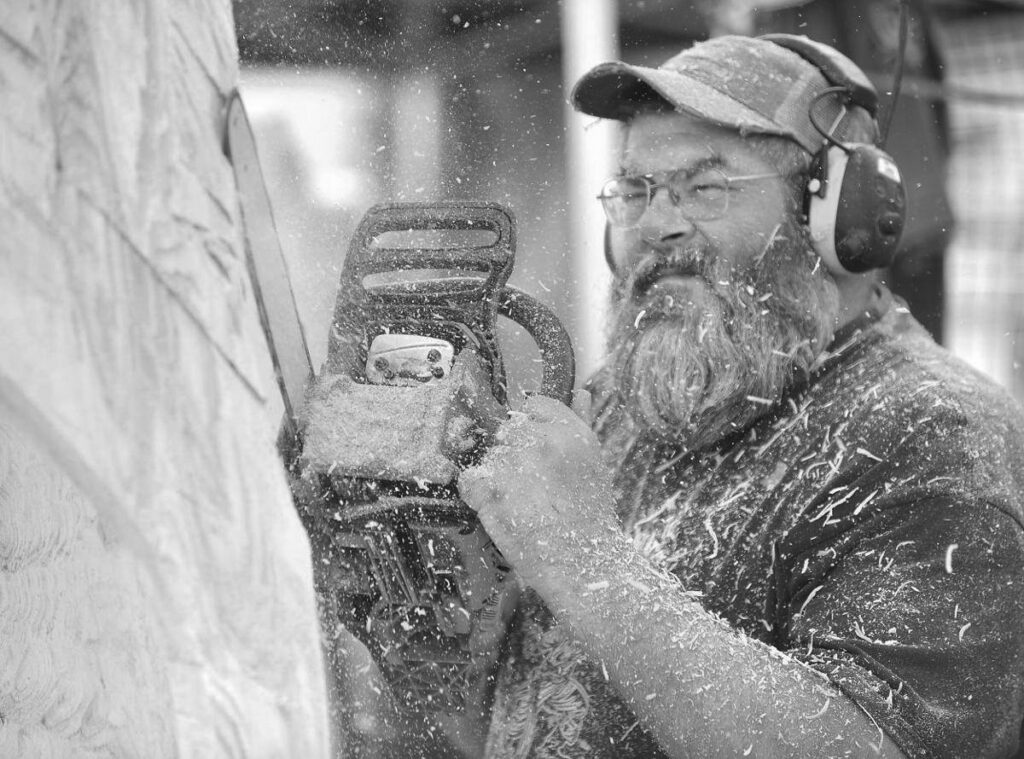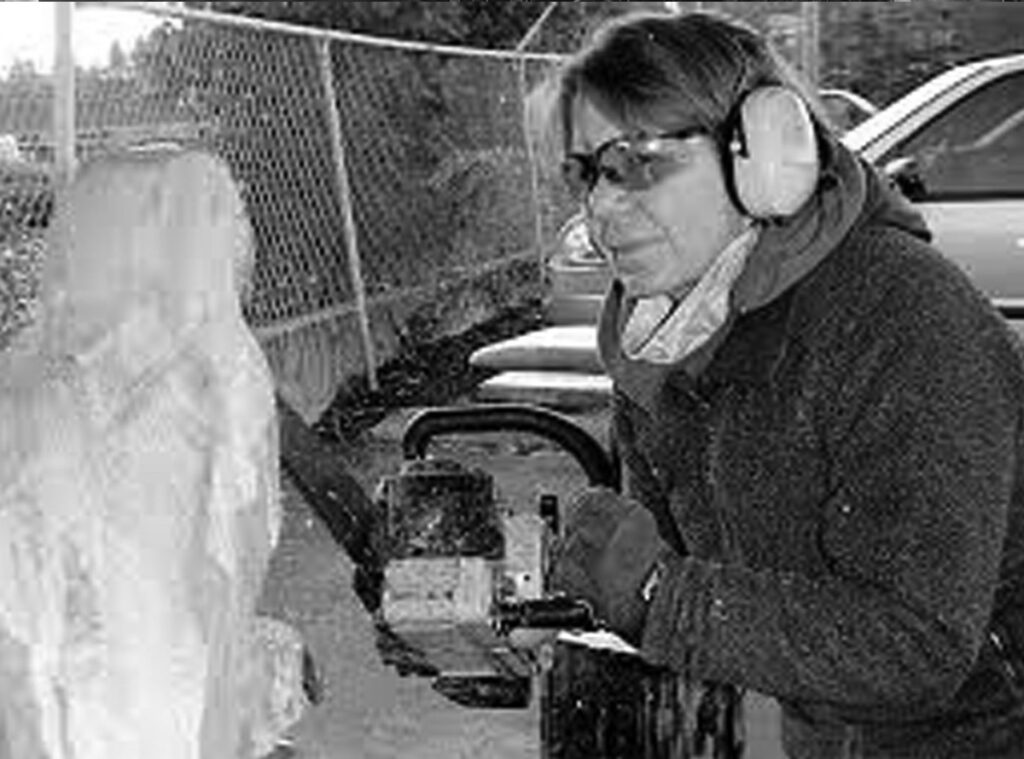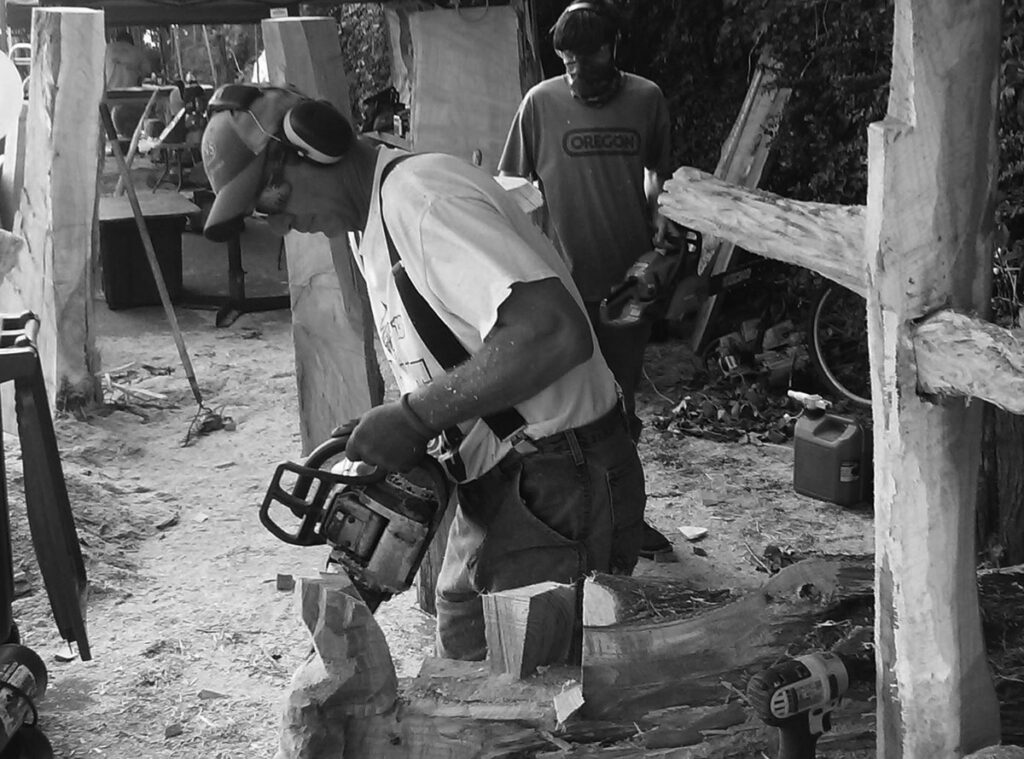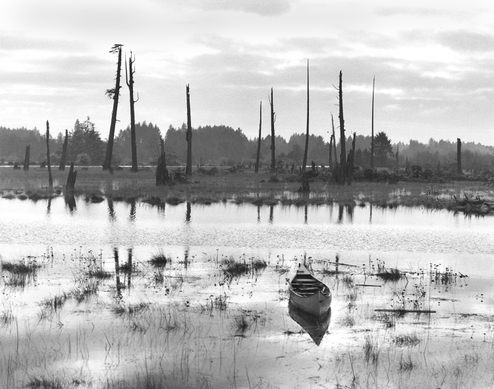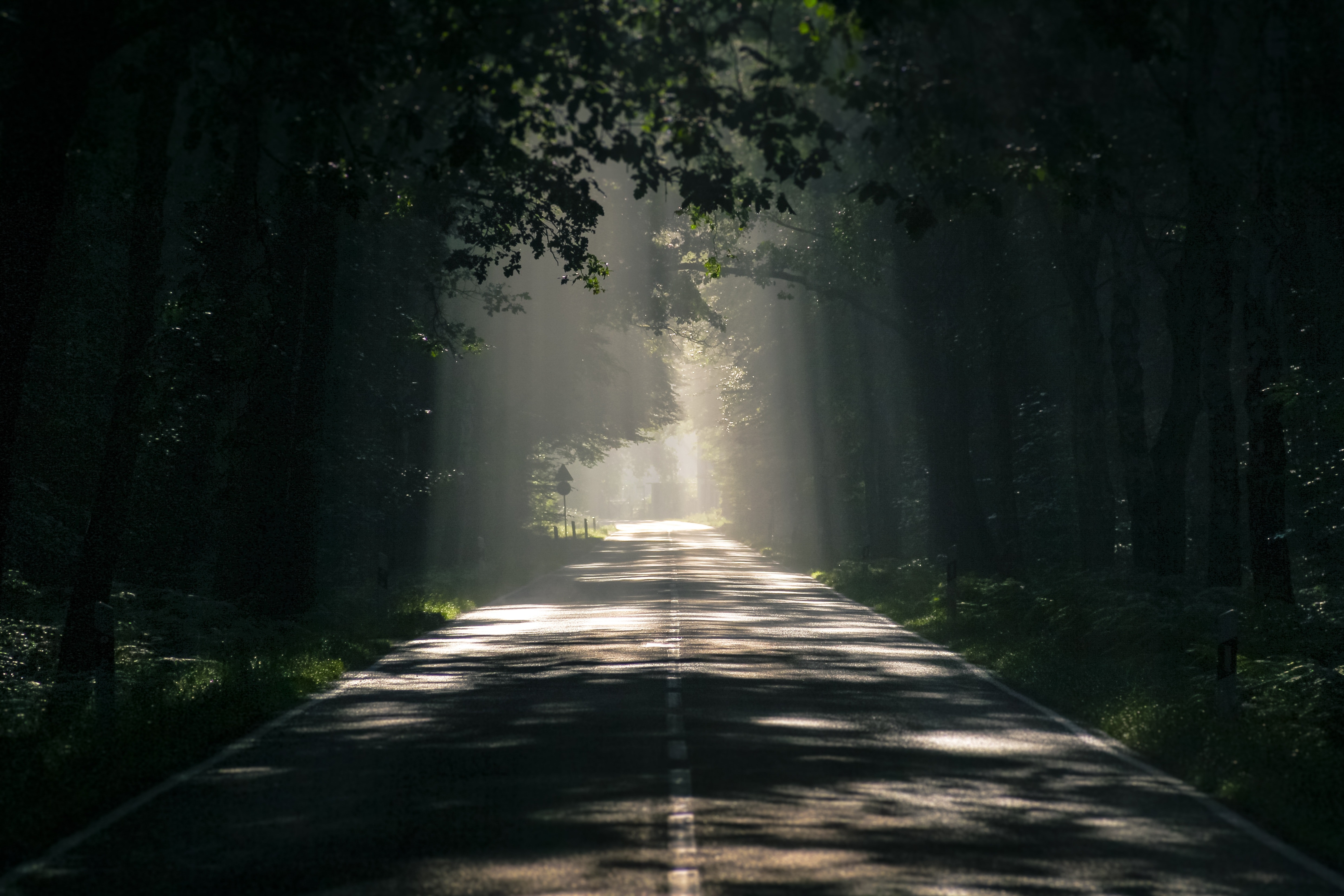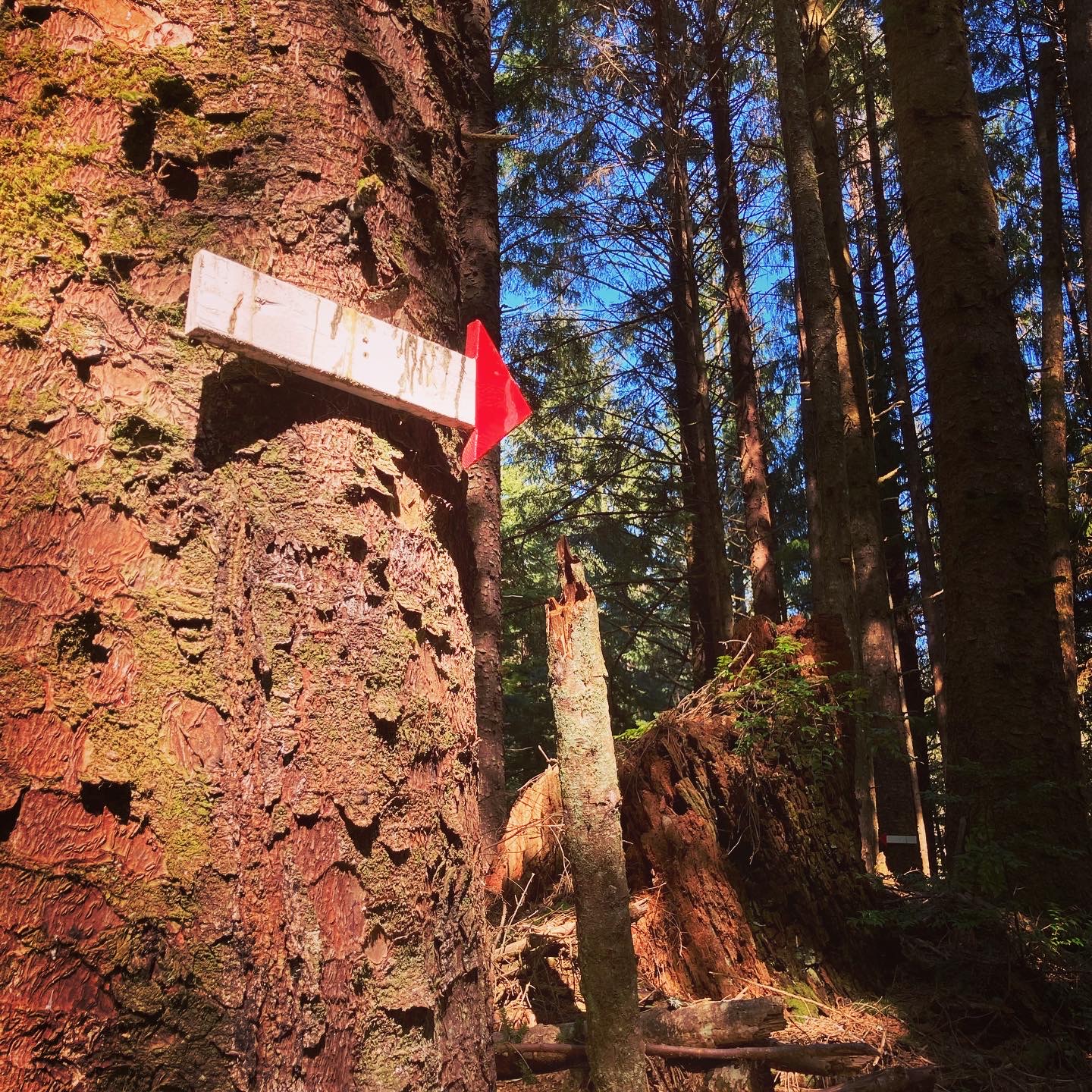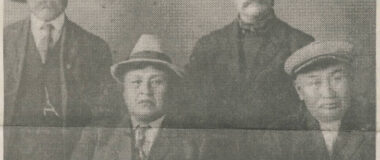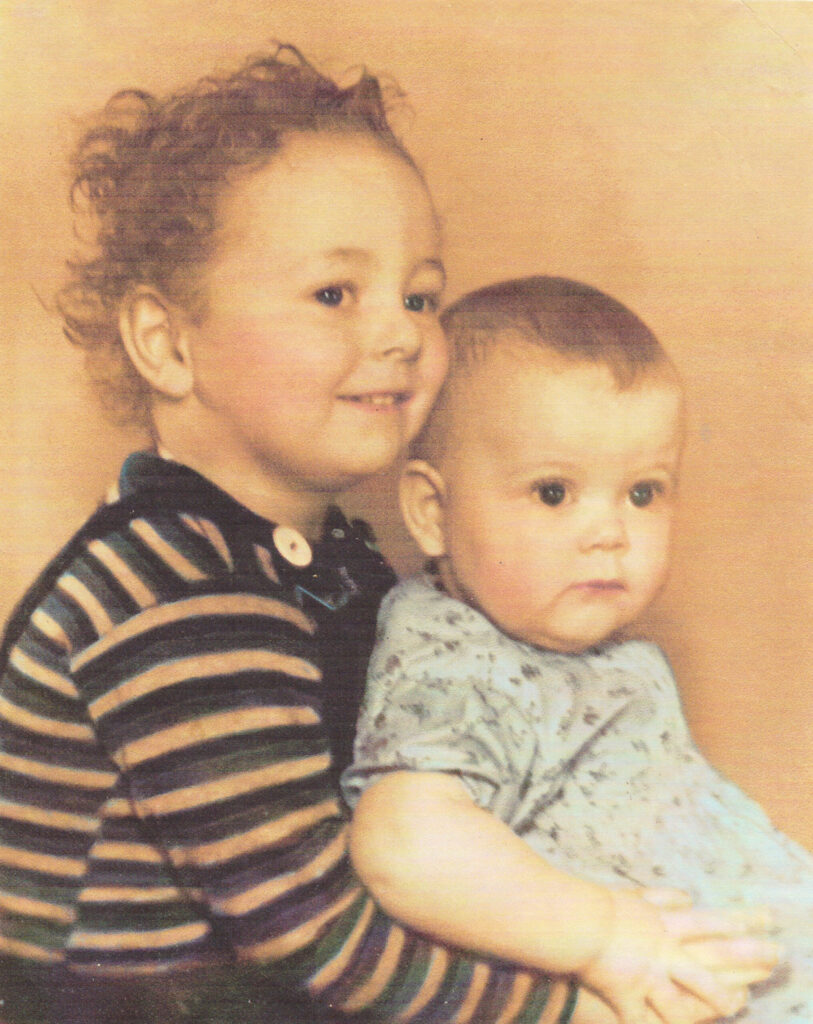
Judy McVay
Born and raised in Spokane, as a young girl Judy spent time outside of school horseback riding, fishing, and frog hunting with older brother Mike; often bringing home a catch that mom cooked and served for supper. Their father Dee McVay, a Spokane police officer and mother Genevieve, a nurse at Sacred Heart Hospital divorced when Judy and Mike were in elementary school and younger siblings, Pat and Eileen, were still in diapers.
A smart, active, young lady and an avid reader from an early age, Judy often read aloud to younger siblings Pat and Eileen. All four siblings were talented artists and accomplished athletes. Judy played softball, competed in equestrian events, and painted, while both Mike and Pat attended college on sports scholarships and dabbled in the arts and theatre. Mike and Judy often spent summers on the Oregon coast with their father who’d left Spokane to pursue a dream of logging and milling old growth forest at Eel Lake. It was there that in 1956, while still a teen, Mike carved his first piece of art with a chainsaw.
I married a nut with a logging truck
The summer before her senior year at North Central High in Spokane, Judy met tramp logger Dick Backus through connections with her father’s Eel Lake mill. The couple carried on a long-distance relationship until graduation when they married and quickly became parents to Steve followed by Lynn and then Boaz four years later. The young family moved around chasing logging jobs and living the tramp lifestyle with Dick working and playing hard while Judy watched after the house and kids. Divorced in 1969, Judy became a single mom and settled with the kids on acreage in Grays Harbor logging country where they struggled to make ends meet. Despite it being a time when lumber industry jobs were unbecoming for a woman, raised on a family mill, Judy was more than competent and worked as needed at nearby shake mills and in the woods as a Whistle Punk.
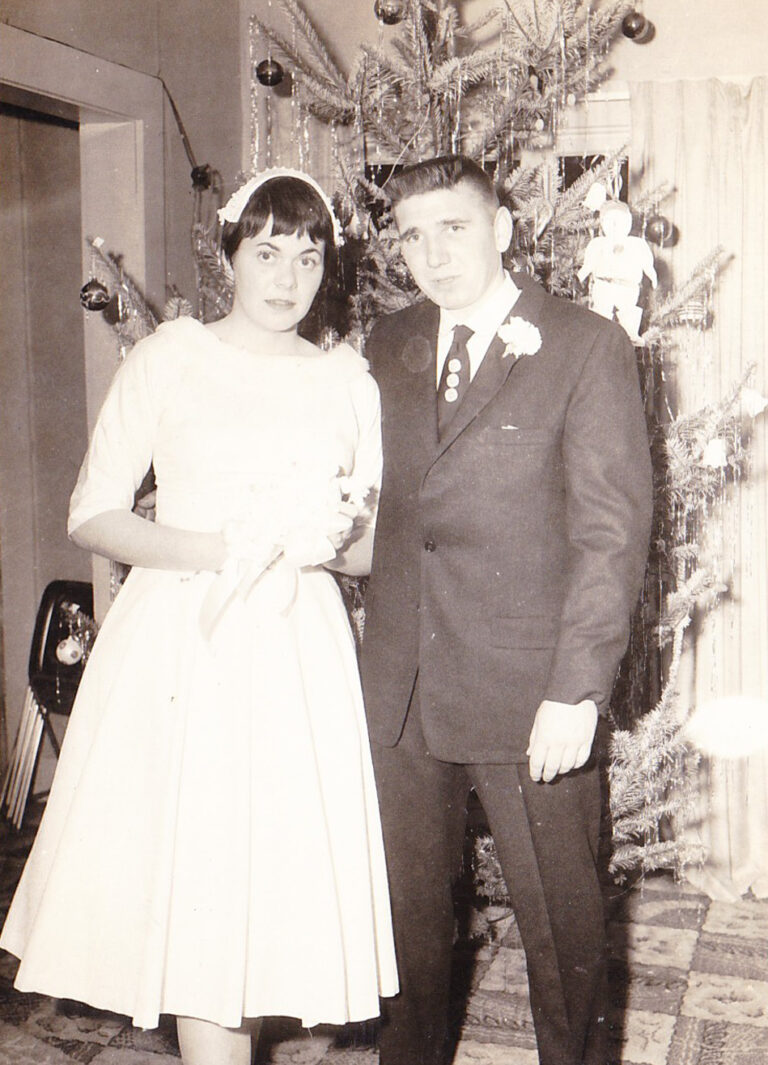
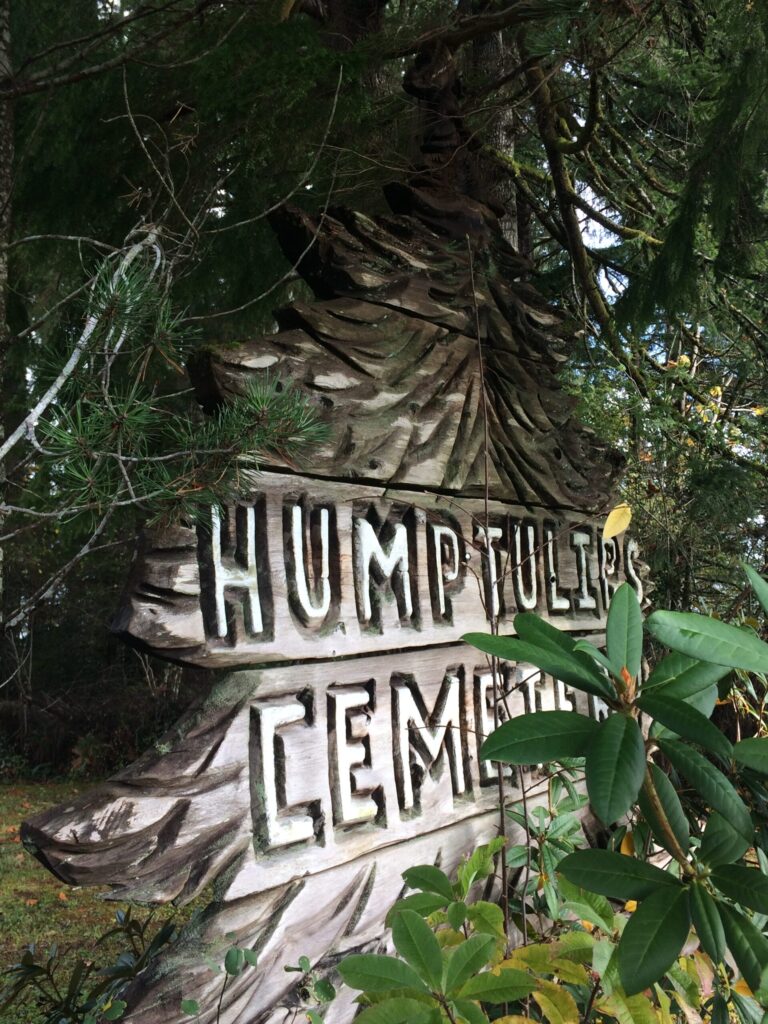
Let the carving begin!
In the mid 60s, Judy’s brother Mike traveled Europe to work and study art for a couple of years. He returned in 1970, landed at Judy’s and at their father’s request, Mike worked with her to hone her chainsaw carving skills in hopes it would bring an income source to support her kids. At first the siblings worked together, the Humptulips Cemetery sign as their first collaboration, and soon Judy was carving on her own – no small feat for a woman given the weight, size, and dangers associated with chainsaws back then.
Making her way in the world
The first woman chainsaw woodcarver in Washington state, Judy cut her teeth (so to speak) on a three-foot tall tiki; a piece that still resides in her private collection. In 1981, at the Puyallup Fair, Judy made history (again) by placing fourth at the first ever chainsaw carving competition. Her twenty-three-foot totem pole, carved in less than six hours, won a coveted top-five spot among 15 male competitors. The following year, she did an encore performance at the same venue, placing fifth.
It’s difficult to explain in tangible terms the level of chauvinism and anti-support from the male-dominated carving community that Judy faced back then. Instead of celebrating her physical strength, artistic talent, and craftsmanship, many of the male carvers were upset when she won competitions. Sounds unfair by today’s standards but remember it was the 70s and 80s and men didn’t welcome being shown up by a woman, especially one with a chainsaw! Due to the sport being in its infancy, finding qualified judges wasn’t easy, and because the competitions were put on by The Fair, and not the carvers, judges often had experience in judging dog shows and other unrelated events. But it wasn’t just other carvers or inexperienced judges, Judy faced equal doses of chauvinism from male spectators too. Many of whom would see her standing with one of her sons or brothers, approach them with a question, and totally disregard Judy. Steve recalls experiencing that awkward situation more than once while at shows before he began carving.
It’s a testament to Judy’s tenacity and grit that she not only made a significant impact on the art form, but leveraged the negativity flung at her to fuel wins. She placed multiple times at big competitions such as Puyallup and Westport plus others across Washington, Oregon, and California. Judy was notorious for rolling up at the last minute, her blue truck stuffed to the gills with carvings and saws, only to be met by overt disappointment from the men who were praying she wouldn’t show up and beat them.
Everywhere you go – there she is!
Judy McVay is quite possibly the most prolific commercial chainsaw carver to date. The sheer volume of her work that resides in public spaces is vast. Her signs and murals dominate the Hidden Coast Scenic Byway (WA-109 & 115 between Hoquiam and Taholah, including Ocean Shores) with amazing examples of her work in public view. The Welcome to Ocean Shores sign in particular has been recognized as historically significant and the nearby iconic Rain Gauge at Lake Quinault Lodge is highly photographed and shared widely across social media.
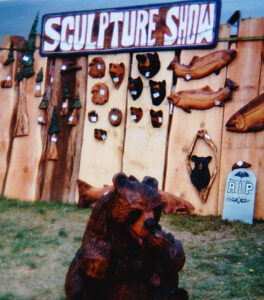
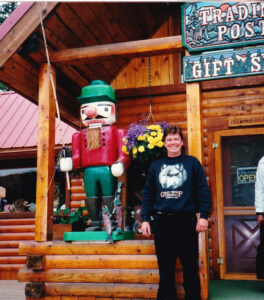
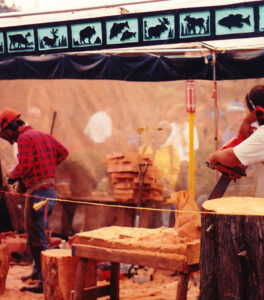
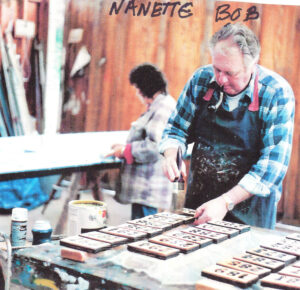
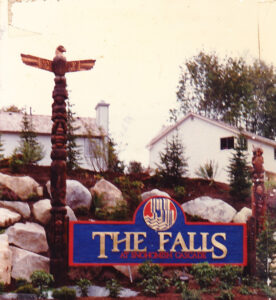
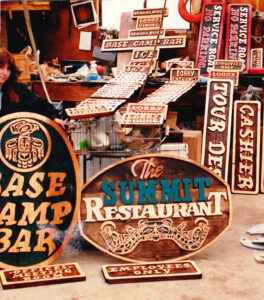
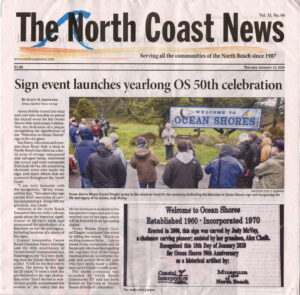
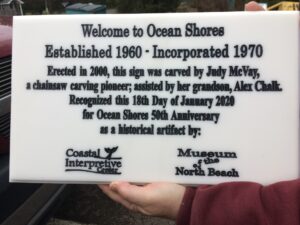
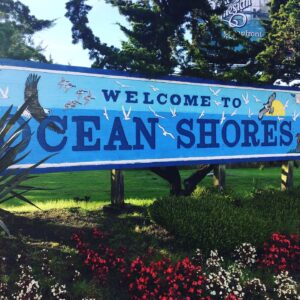
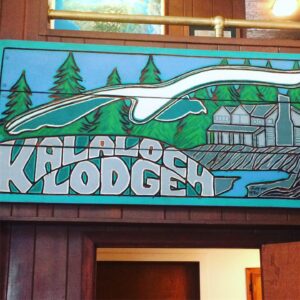
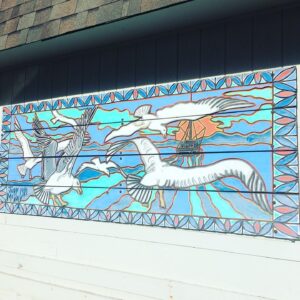
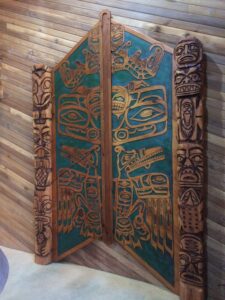
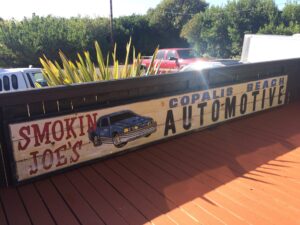
Her works are also abundant on Whidbey Island and beyond; seven large murals for the Navy, six totem poles aboard Navy ship USS Whidbey Island, a collaborative carve on the Welcome to Whidbey Island sign, giant murals at the nearby Boeing plant, a large volume of carvings for Princess Cruises, and several murals at Kalaloch Lodge and Ocean Crest Resort — to name a few. The city of Tukwila sent a custom Judy McVay totem pole to their sister city in Japan and Judy carved a piece for the Seahawks back in the 70s after meeting coach Jack Patera. To say that her body of work is enormous, historic, and collectible is an understatement.
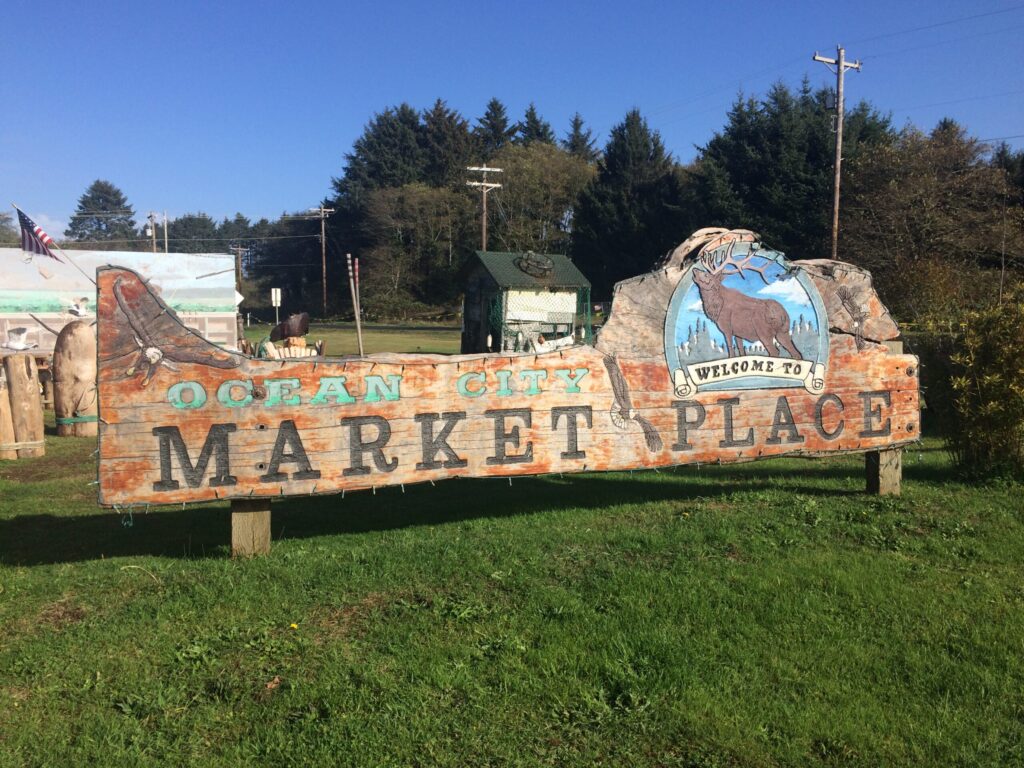
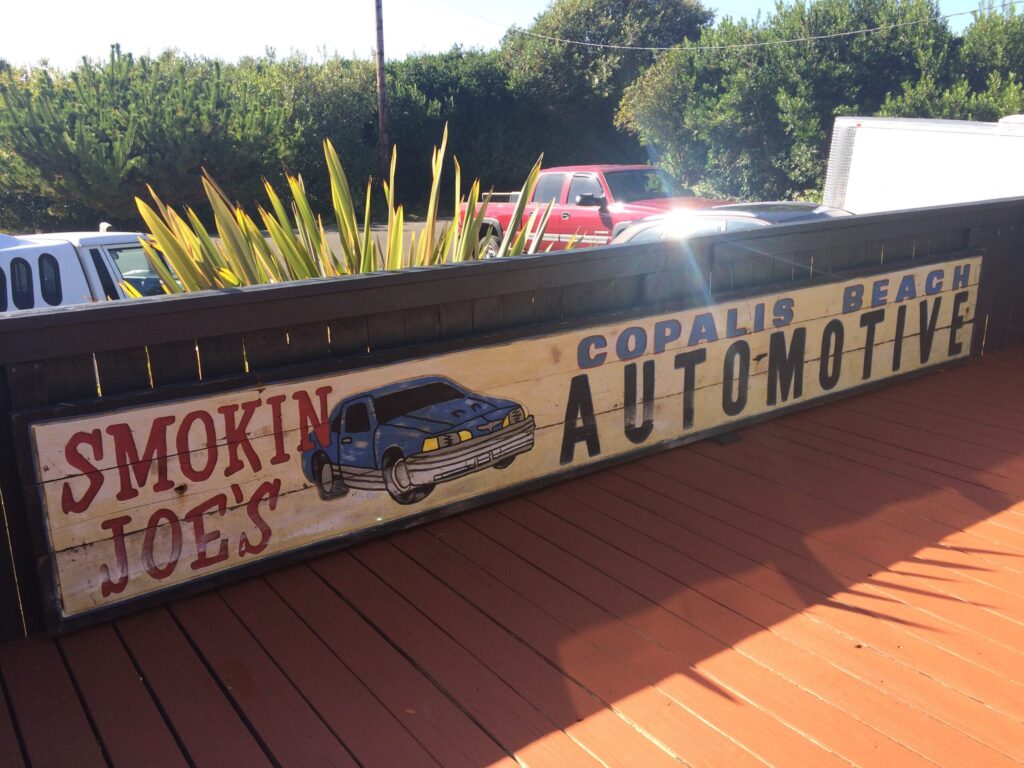
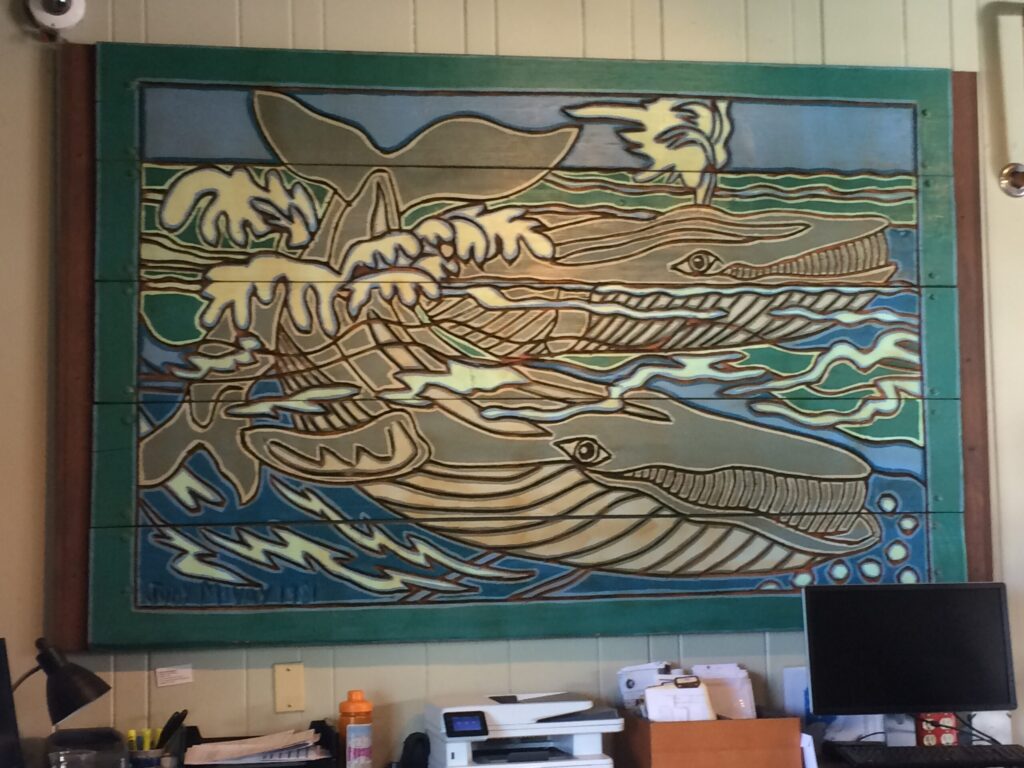
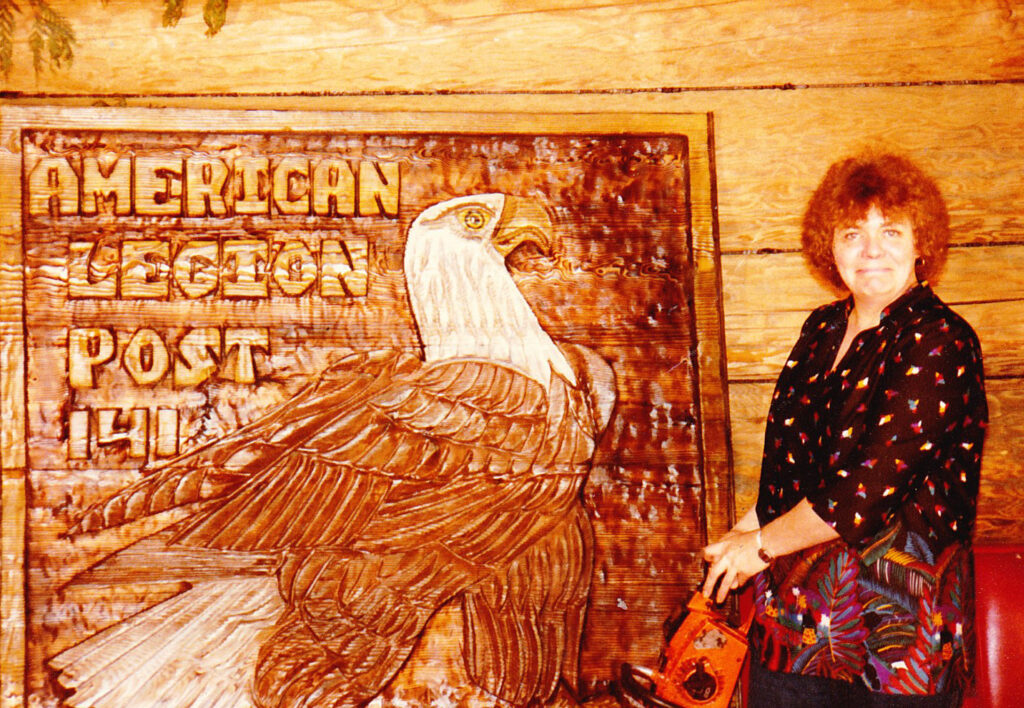
A mover and shaker
As you may guess, Judy was always on the go. She spent time serving as president of the women’s auxiliary at the Whidbey American Legion (where at least two of her works are featured) and she helped create, promote, and manage the Cascade Chainsaw Sculptor’s Guild and their associated carving events. She also mentored her grandkids in carving and had an abundance of supportive, long lasting friendships. Those who know Judy love her and those who don’t, admire her. That’s the kind of person she is.
People person and animal lover
An equestrian from the beginning, Judy brought that love for horses everywhere; starting a drill team for the 4H in Seaside, Oregon in the 60s and raising and riding horses wherever she lived; a lifestyle that her daughter Lynn picked up. Dogs too were important and ever present in her life with a special fondness for Rottweilers in particular, thanks to son Boaz who introduced her to the breed. An avid reader, Judy is known for juggling three or more books at any given time; a passion son Steve adopted as a pre-teen. Family is immensely important, and Judy pays special attention to maintaining close relationships with her kids, grandkids, and great grandkids as well as the extended family.
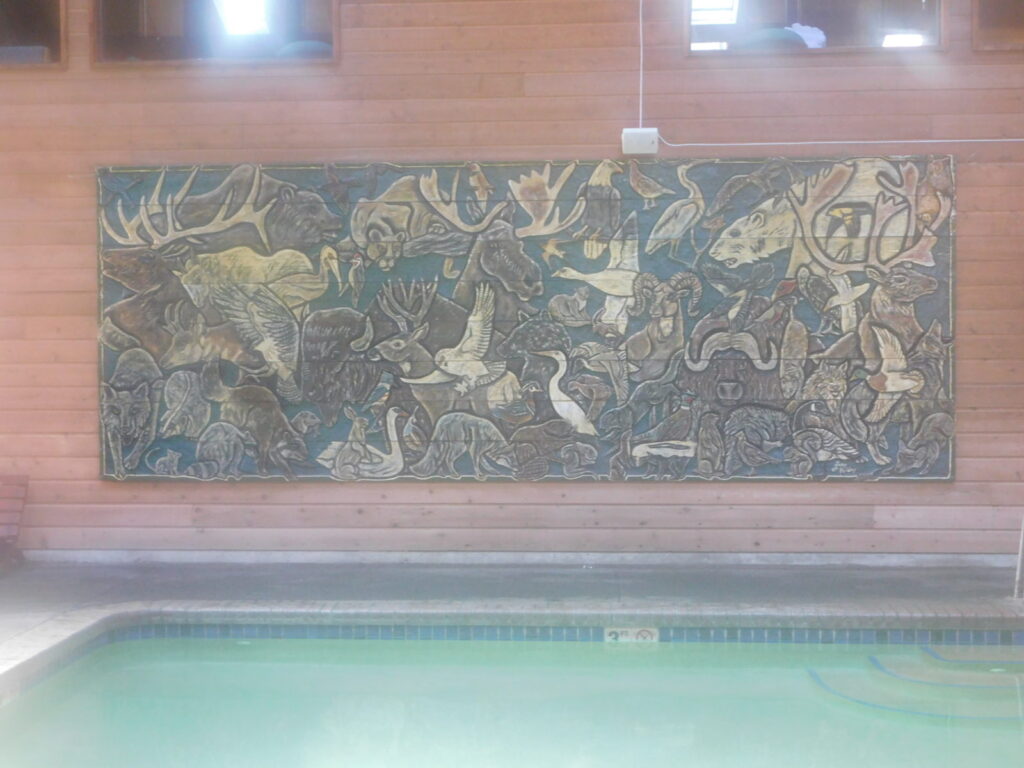
A vast number of Judy’s pieces reflect her love for animals and nature. You can see it in her signature Pacific Northwest style including native-inspired orcas, bears, thunderbirds, and other totem animals as well as regional non-native style wildlife; eagles, seagulls, killer whales, elk, caribou, deer, horses, birds, and flowers. A mural hanging at the Ocean Crest Resort in Moclips is a prime example; eight feet by 20, it depicts 70 different northwest animals ranging from large elk to a small red fox and in most of her work, there’s at least a nod to nature in the piece itself and sometimes only in the ornate carved boarders that she’s known for.
Where is Judy McVay?
Judy lives in Washington surrounded by family where she works on carvings, creating new designs, and remains deeply connected with her lifelong friends, the carving community, and the great outdoors. Click here to find a Map to Judy McVay’s work along the Washington Coast.
